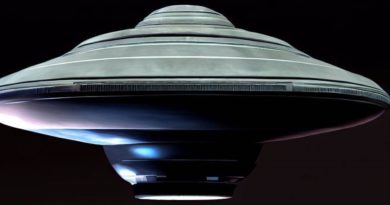Mystery around controversial Peru ‘alien mummies’ deepens after new fingerprint analysis indicates they’re NOT ‘HUMAN’

Bizarre diagonal grooves along the fingertips and toes of one of Peru’s eerie and hotly debated ‘alien mummies’ points to a nonhuman origin for these odd remains.
Worldwide controversy has followed the small peculiar specimens since September, when veteran broadcast journalist and prolific UFO researcher Jaime Maussan first presented two alleged ‘alien’ corpses to Mexico’s congress last year.
Now DailyMail.com has spoken to a former Colorado prosecutor and current defense attorney, who has examined one of the over half-a-dozen ‘alien’ specimens with the help of three independent forensic medical examiners from the United States.
The use of fingerprints — or what are technically known as ‘friction ridge’ skin impressions — dates back as far as 300 BC in China according to the US Department of Justice’s Fingerprint Sourcebook.
And criminal forensic investigators in America have long systematized the hunt for unique features ever since these patterns first came into use by US law enforcement in 1902, beginning with three broad types of fingerprint: arches, loops and whorls.
But ‘María,’ the so-called ‘alien‘ mummy that McDowell and his forensic doctors examined, appeared to have fingerprints that matched no known human pattern.
‘We did not see any loops or whorls on the prints of the fingers or on the toes,’ McDowell, now principal at the McDowell Law Firm, told DailyMail.com.
‘I’m a former prosecutor. I’m a criminal defense attorney. I’ve seen lots of fingerprints. And these were not classic fingerprints,’ the attorney added.
‘María’s fingerprints weren’t consistent with human prints.’
Like most of the well over half-a-dozen ‘alien’ mummy specimens brought to light by Jaime Maussan in the past year, María was discovered caked in diatomaceous earth: white, powdery aquatic fossils left behind by a type of plankton known as diatoms.
‘Much of her body is covered in diatomaceous earth,’ McDowell explained, ‘however, on the fingers that were exposed, the epidermal ridges I saw appeared to be in mostly straight lines.’
McDowell and the three US medical examiners who journeyed with him to Peru to examine the bodies last April have emphasized that it would be ‘extremely premature’ to make any definitive statements about these mysterious mummies.
McDowell told DailyMail.com that there may yet be a terrestrial explanation for the unusually straight ‘friction ridge’ skin patterns on María’s fingers and toes.
‘It could possibly have something to do with the way her skin was preserved,’ he advised. ‘It’s very odd.’


